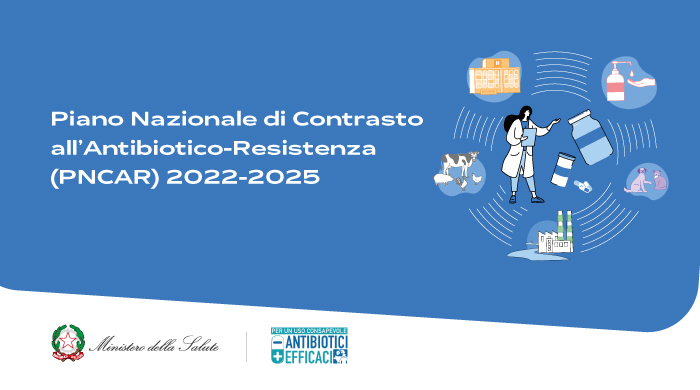The document follows on from the previous PNCAR 2017-2020, extended until December 2021, and was created with the aim of providing the country with strategic guidelines and operational indications to deal with the antibiotic resistance emergency (ABR) in the coming years , following a multidisciplinary approach and a vision One Healthpromoting constant international comparison and at the same time building on the successes and criticalities of the previous national plan.
Antimicrobial resistance (AMR), of which antibiotic resistance certainly represents the most important factor, is a phenomenon that occurs naturally in microorganisms, as a form of adaptation to the environment, and is due to the ability of the latter to mutate and acquire the ability to resist molecules potentially able to kill them or stop their growth. Due to the enormous selective pressure exerted by an excessive and often improper use of antibiotics in the human, veterinary and zootechnical fields, over time this phenomenon has taken on the characteristics of one of the main global health emergencies.
ECDC has estimated that the number of infections caused by resistant bacteria to antibiotics in the EU/EEA was
-
685,433 in 2016
-
865,767 in 2019
-
801,517 in 2020.
These infections resulted in an estimated annual number of attributable deathswhich increased from 30,730 in 2016 to 38,710 in 2019, with a slight decrease in 2020 (35,813 deaths).
But the impact of ABR is not limited to mortality alone, it also includes prolonged hospitalizations, delays in the administration of therapies or in carrying out interventions, an increase in post-surgical and/or post-chemotherapy infections, due to the ineffectiveness of the protocols commonly used prophylaxis.
Furthermore, in the veterinary sector, the ABR, in addition to involving an increase in the potential health risk for professionals and animal owners, can be responsible for the reduction of both the efficiency of farms and productions.
To preserve the value of antibiotics and protect the health of people, animals and the environment, it is essential that not only healthcare professionals and institutions, but also citizens become fully aware of the extent of this phenomenon: only by collaborating can we hope to curb the development and spread of antibiotic resistance.
to know more
